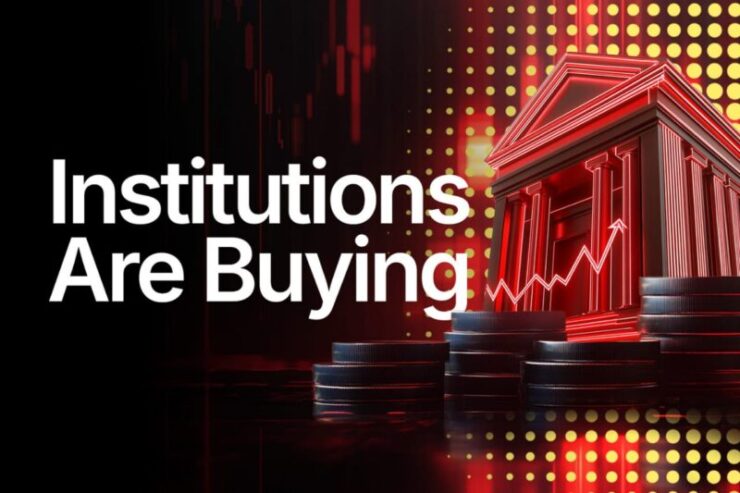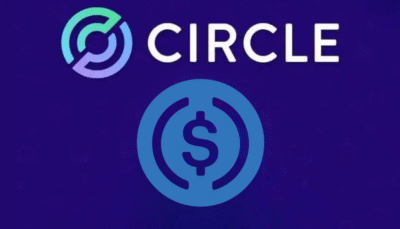The crypto market is often described as a battleground between retail traders and institutional investors. Yet, time and time again, retail traders find themselves on the losing side, while institutions continue to accumulate wealth. Why does this happen?
According to Matthias, an expert on the CoinRock Show, the reason is simple—retail traders trade based on emotions, while institutions follow a calculated strategy.
“Retail traders react, institutions plan. That’s the biggest difference between winners and losers in this market.” — Matthias
Understanding the fundamental differences between these two groups is the key to avoiding costly mistakes and positioning yourself on the winning side.
Retail Traders Buy Hype and Sell Fear
One of the biggest mistakes retail traders make is buying assets when prices are skyrocketing and selling when the market dips. This behavior is driven by FOMO (fear of missing out) and panic, leading to predictable cycles of retail losses and institutional profits.
A classic example of this was during Bitcoin’s 2021 bull run, when retail traders rushed in as Bitcoin approached $69,000 in November 2021. At this point, Google Trends data showed a peak in Bitcoin search interest, and exchange inflows surged as retail investors bought aggressively. However, on-chain data from Glassnode revealed that long-term holders were quietly selling into this strength, taking profits while retail investors FOMO’d in.
Just months later, Bitcoin crashed to $16,000 in late 2022, wiping out many retail investors who had bought at the top. Data from CryptoQuant showed that whale accumulation increased during this period, indicating that large investors were buying Bitcoin at deeply discounted prices while retail traders panic-sold at a loss.
The same pattern repeated with meme coins like Dogecoin and Shiba Inu, which saw retail investors pour in at the height of their respective hype cycles. Dogecoin surged over 10,000% in early 2021, fueled by Elon Musk’s tweets and retail speculation. By May 2021, DOGE reached $0.73, only to plummet by over 80% within months.
Similarly, Shiba Inu (SHIB) skyrocketed 1,200% in October 2021, but within a year, it had lost more than 90% of its value, with whale wallets offloading billions of tokens at the peak.
Another major example of retail-driven losses was the Terra (LUNA) and UST collapse in May 2022. At its peak, LUNA was trading above $110, and many retail traders believed it was a stable and safe investment. However, when UST depegged and LUNA’s algorithmic system collapsed, the token crashed to near zero in just days, wiping out billions of dollars in retail investments. Meanwhile, institutional investors and early insiders had already exited, avoiding the catastrophic losses.
Matthias explains how this cycle repeats every market cycle:
“Retail buys when the headlines are bullish and sells when they’re scared. Institutions do the opposite—they buy when no one is talking about it.” — Matthias
Retail traders continue to fall into the same emotional traps—buying when assets are already overvalued and selling when fear dominates. On the other hand, institutions and whales use these emotional swings to accumulate assets cheaply, ensuring that they profit in the long run while retail investors absorb the losses.
Institutions Accumulate During Market Crashes
While retail traders panic and sell at a loss, institutions take advantage of fear-driven selling. When prices dip, they quietly accumulate assets at discounted rates, setting themselves up for long-term profits. This pattern has played out in every market cycle, where retail exits in fear while smart money accumulates in silence.
On-chain data from Glassnode shows that whale wallets increased their Bitcoin holdings significantly during the 2022 crash, while small investors were offloading their positions in panic. During this period, exchange reserves for Bitcoin decreased, signaling that large investors were moving their holdings to cold storage, a classic sign of long-term conviction. Meanwhile, retail traders flooded exchanges with sell orders, driving prices even lower.
According to CoinShares’ Digital Asset Fund Flows report, institutional investors added over $2.9 billion into Bitcoin ETFs and other crypto investment products even during major market corrections. This trend was particularly evident in 2024, as Bitcoin Spot ETFs from BlackRock and Fidelity continued to see inflows despite short-term market volatility. Institutions are not swayed by daily price swings; instead, they accumulate during downturns and wait for the market cycle to shift back in their favor.
Historical data supports this strategy. In 2018, when Bitcoin fell to $3,200, institutional buying increased sharply, leading to a recovery in 2020 and beyond. The same happened in March 2020, when Bitcoin briefly dipped below $4,000 due to pandemic-related panic, only to rebound to new all-time highs within a year. Those who bought in fear made life-changing profits, while those who panic-sold locked in their losses.
Matthias explains why institutions have the upper hand in every market cycle:
“Institutions don’t care about day-to-day price swings. They buy when everyone else is scared, and they hold until retail FOMO drives prices back up.” — Matthias
This is the fundamental difference between institutional investors and retail traders. Institutions have patience, strategy, and access to better data, while retail traders often let emotions dictate their decisions. The key lesson for retail investors is to stop reacting emotionally and start thinking like institutions—buy during fear, hold through volatility, and take profits when the market is euphoric.
Retail Traders Over-Leverage and Get Liquidated
Another major reason why retail traders lose big is overusing leverage. Many inexperienced traders believe they can multiply their profits by using leverage, but they don’t realize that this also magnifies their losses.
Coinglass liquidation data shows that over $600 million in leveraged positions were wiped out in a single day during a recent market downturn. The majority of these liquidations came from retail traders using high leverage on platforms like Binance, Bybit, and OKX. Meanwhile, institutional investors rarely use excessive leverage, which allows them to survive market corrections without getting wiped out.
How Can Retail Traders Avoid These Mistakes?
Retail traders must adopt a long-term mindset and learn from institutional strategies to avoid the common pitfalls that lead to losses. Instead of chasing hype and buying at market tops, they should focus on accumulating assets during downturns, avoiding excessive leverage, and holding with conviction.
One of the best strategies used by successful investors is Dollar-Cost Averaging (DCA). Instead of trying to time the perfect bottom, which is nearly impossible, DCA allows traders to gradually accumulate assets over time, reducing the impact of short-term volatility. Historical data from Glassnode shows that investors who consistently DCA into Bitcoin, even during bear markets, have outperformed those who attempt to time the market.
For example, investors who DCA’d into Bitcoin from 2018 to 2020, when it was trading below $10,000, saw massive gains when BTC surged to $69,000 in 2021. Even those who continued DCA during the 2022 bear market, when Bitcoin was below $20,000, were in profit when BTC crossed $60,000 in 2024. This proves that long-term accumulation beats emotional trading every time.
Another crucial factor is risk management. Many retail traders overexpose themselves to leverage, hoping for quick gains, but end up getting liquidated when the market moves against them. Coinglass liquidation data shows that more than $600 million in leveraged positions were wiped out in just 48 hours during the latest market downturn, with most of the losses coming from retail traders who used excessive leverage. Institutional investors, on the other hand, rarely take on excessive risk, ensuring they survive market corrections and continue accumulating assets at lower prices.
A key lesson from institutions is having patience and a well-defined investment thesis. Instead of jumping on trending coins and meme tokens, retail traders should focus on projects with strong fundamentals and long-term utility. CoinShares’ 2024 investment report highlights that institutional capital is increasingly flowing into Layer 2 solutions, real-world asset tokenization (RWA), and AI-integrated blockchain projects rather than speculative assets.
By thinking and investing like institutions, retail traders can avoid emotional decision-making, reduce risks, and position themselves for long-term success in the crypto market.
“If you invest like a trader, you’ll probably lose. But if you invest like an institution, you’ll build real wealth.” — Matthias
Position Yourself on the Winning Side
The crypto market is not rigged against retail traders, but most retail investors fall into predictable traps—buying high, selling low, overleveraging, and trading emotionally. Institutions, on the other hand, follow data-driven strategies, accumulate in silence, and let retail traders drive up prices before taking profits.
If retail investors want to stop losing money and start making serious gains, they must think and act like institutions—buy when others are fearful, avoid hype, and focus on long-term gains.





